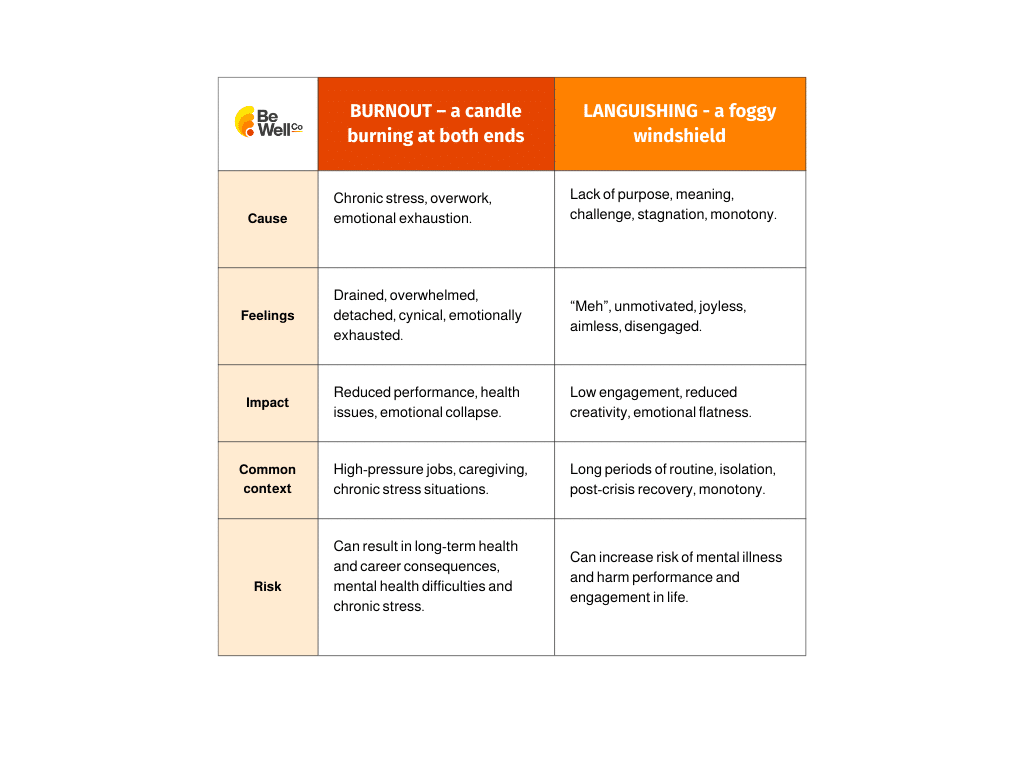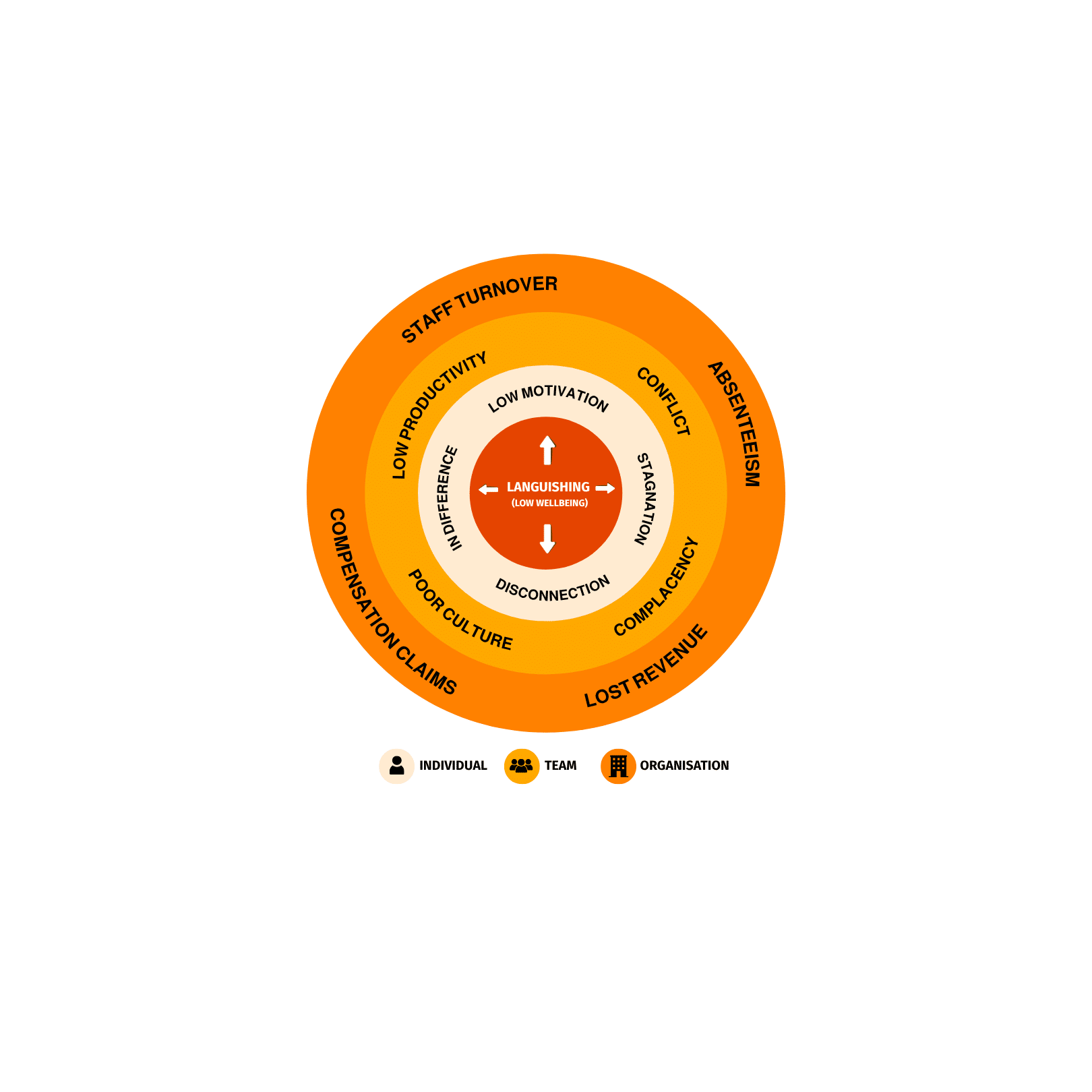Want better performance? Start with wellbeing
When teams languish, performance, productivity, creativity and innovation decrease at work. So what is languishing at work? It’s when individuals are showing up, but not really switched on. You’re getting through meetings, emails, and tasks—but with low energy, low motivation, and no real sense of progress.
You’re not burnt out, but you’re not thriving either. Over time, that “just getting by” feeling starts to impact performance, morale, and team connection. More on languishing here.
Recharge your team's drive
Helping teams move beyond the "meh"
If your team is feeling flat, unmotivated or simply going through the motions, they’re not alone. Many employees today are emotionally disconnected, low on energy, and struggling to find purpose in their work. We call this languishing—but recognising it is just the beginning.
This workshop gives your people the language to name what they’re experiencing—and the tools to move through it. Through guided reflection, practical strategies, and actionable takeaways, we help teams reconnect to meaning, recharge their energy, and take real steps toward feeling and functioning better.
Available as a 60- or 120-minute session, this workshop can be tailored to your team’s needs.
To explore our full range of workplace wellbeing sessions, visit our service page here.

How to recognise languishing in your team
Your team might be showing up—but are they switched on? Languishing looks like low energy, flat motivation, and people just going through the motions. It’s not burnout, and it’s not a mental illness. It’s that “meh” feeling that drags on morale and quietly kills momentum.
In our latest survey, employees described it as “feeling stuck,” “disconnected,” “exhausted,” and “like the joy has gone.” They weren’t taking sick leave —they were present, but mentally checked out. That’s presenteeism, and it’s costing your business more than you think.
Knowing the signs means you can step in early—before low energy becomes full disengagement.

Burnout vs languishing
We are too often saying that people are burned out, while they technically aren’t. Burnout is a state of exhaustion caused by prolonged stress. Languishing isn’t technically caused by prolonged exposure to stressors. This means that both diagnosis the problem and tackling it requires a different approach, as the figure beside explains.

The ripple effect of languishing in the workplace
Languishing doesn’t stay contained. It starts with the individual—low energy, low motivation, low engagement—but it quickly ripples outwards. Teams become less collaborative, creative, and connected. Over time, performance, culture, and business outcomes take a hit. This visual shows just how far the impact of languishing can reach. It will effect: the individual or staff member (tier 1), teams (tier 2) & organisational outcomes (tier 3).





